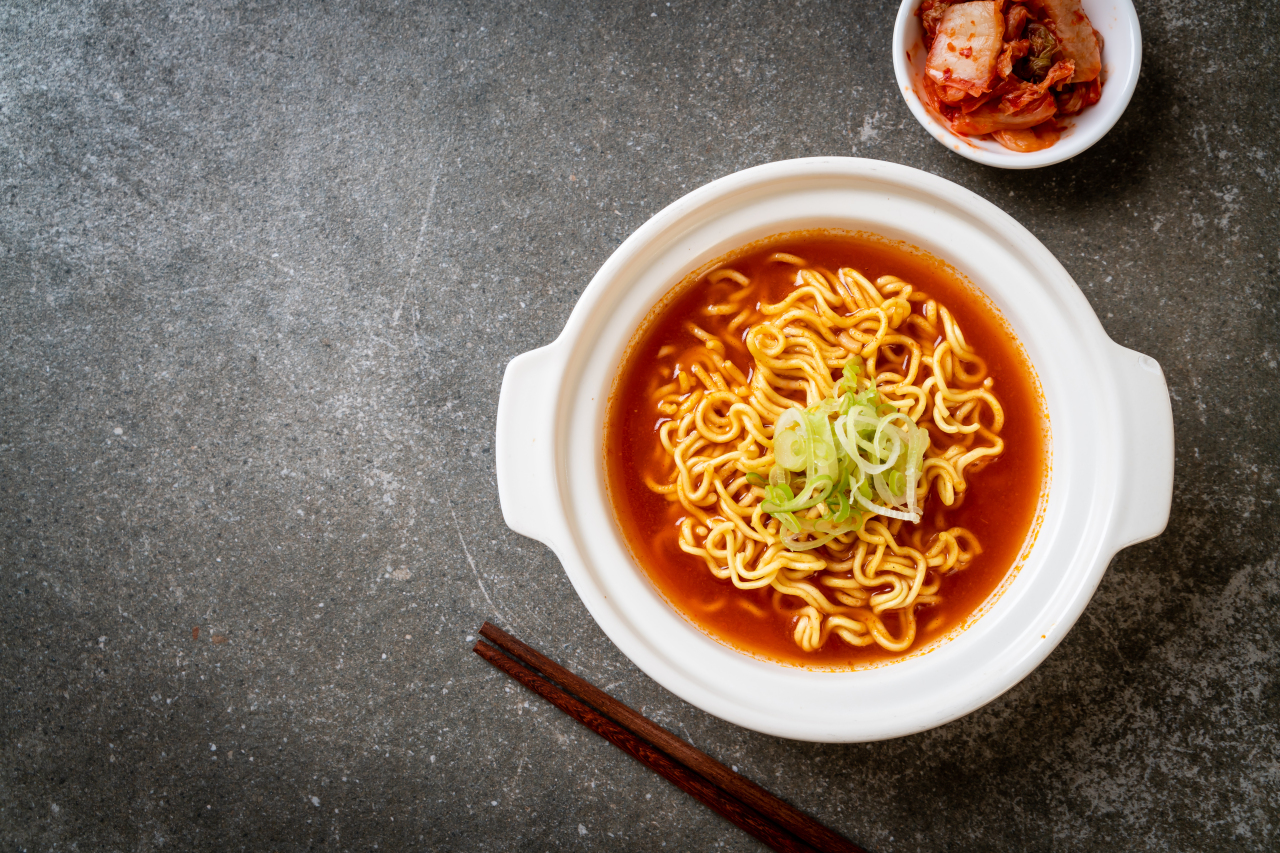 |
(123rf) |
Amid soaring food costs, prices of ramen, Koreans’ most favored instant food and a common low-cost meal option, are set for an increase next month, in another blow to customers already grappling with persistent inflation. Koreans consumed the most instant noodles per capita in the world in 2020.
Nongshim, a leading South Korean ramen maker, said Wednesday that it was raising prices for instant noodles and snacks, effective Sept. 15, by an average of 11.3 percent and 5.7 percent, respectively -- an unavoidable surge prompted by soaring global wheat prices, according to the company.
“We had tried to offset the price hike, removing redundancies in our operations, but that’s clearly not enough,” a Nongshim official said, referring to an operating loss of 3 billion won ($2.2 million) in the second quarter for the home market alone, excluding overseas profit.
It was the first time the ramen maker, which gets about 80 percent of its revenue from instant noodles, has suffered a loss since the same period in 1998. Set up in 1965, Nongshim is a key subsidiary of Nongshim Group, whose business ranges from processing agricultural products to building industrial machines. Assets held by the group came to 5.05 trillion won last year.
Raising noodle prices was needed right away instead of delaying until next month after the Chuseok holiday, but stretching household budgets just before when they need a break the most was worrisome, the company said.
Consumer prices still show few signs of fading, with the latest annual inflation reading in July standing at an almost 24-year high of 6.3 percent, as soring food and gasoline prices strain households and businesses alike.
According to a Bank of Korea survey Tuesday, consumers revised down their forecast this month for where inflation will be in one year to 4.3 percent, from 4.7 percent in July, which was an all-time monthly high.
But consumers still expect an interest rate hike in as early as six months, the survey found, and the government has not changed its forecast that inflation will peak in the late third or early fourth quarter.
“We could see signs of a price slowdown, soon after the holiday,” Finance Minister Choo Kyung-ho said this week, noting uncertainties like Russia’s war in Ukraine prevent him from being more certain about the price trajectory. The four-day Chuseok thanksgiving holiday starts Sept. 9.
But right now, consumers looking to prepare food for the holiday should be ready to spend more, said Korea Price Information, a local research group. A four-people household would have to pay 9.7 percent more at marketplaces and 6.4 percent more at supermarkets on average, the group said Wednesday.
Recent torrential rain that flooded Seoul and left eight dead have sent prices higher, the group added.
The government is currently offering discount coupons to accelerate consumer spending on agricultural and farm products, as part of broader efforts meant to revive demand and ease supply pressures.
“We will absolutely bring down food prices,” President Yoon Suk-yeol said at a weekly meeting on the economy, held two weeks ago at a local grocery store in Seoul. Yoon launched the meeting in early July to solidify his commitment to creating a robust economy for ordinary Koreans.
By Choi Si-young (
siyoungchoi@heraldcorp.com)








